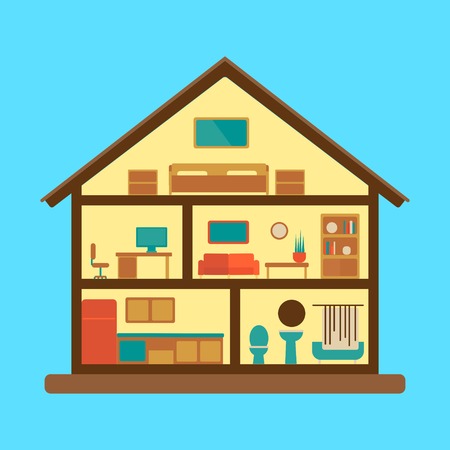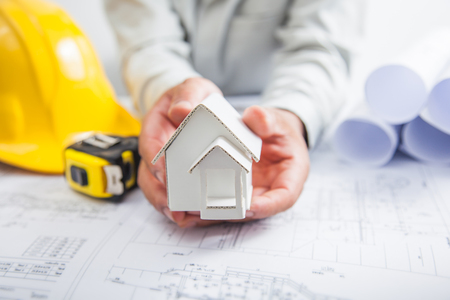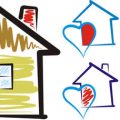Understanding Regional Climate and Energy Needs
When it comes to customizing your smart home energy profile, your geographic location plays a huge role. The United States is home to a wide range of climates, and each one has unique energy demands. From the hot and humid summers in the South to the long, snowy winters in the Midwest, understanding your region’s climate can help you choose the most efficient smart home features for comfort and savings.
How Climate Affects Energy Consumption
Different parts of the country face different energy challenges. Homes in warmer areas often use more electricity for air conditioning, while colder regions require more heating during the winter months. Smart thermostats, automated blinds, and energy-efficient HVAC systems can make a big difference when tailored to local weather conditions.
Common U.S. Climate Zones and Their Energy Needs
| Region | Climate Characteristics | Main Energy Needs | Recommended Smart Features |
|---|---|---|---|
| Southeast (e.g., Florida, Georgia) | Hot, humid summers; mild winters | High cooling demand | Smart thermostats, humidity sensors, smart ceiling fans |
| Southwest (e.g., Arizona, Nevada) | Hot and dry; large temperature swings | Cooling during day, heating at night | Smart window shades, programmable thermostats, solar integration |
| Midwest (e.g., Illinois, Michigan) | Cold winters with snow; warm summers | High heating demand in winter | Zoned heating controls, smart radiators, weather-aware automation |
| Northeast (e.g., New York, Massachusetts) | Cold winters; humid summers | Both heating and cooling needs | Dual-function HVAC systems, smart insulation monitors |
| West Coast (e.g., California) | Mild year-round; some regions with dry heat or coastal fog | Moderate energy use with seasonal variation | Energy monitoring systems, smart plugs for appliances, solar panels |
The Importance of Local Customization
A one-size-fits-all approach doesn’t work when optimizing your smart home’s energy efficiency. For example, someone living in Texas might benefit more from a system that prioritizes air conditioning control and humidity regulation, while a homeowner in Minnesota should focus on maximizing heating efficiency during harsh winters. By aligning your smart home features with your regions specific climate needs, you can improve comfort and reduce utility bills year-round.
2. Selecting Energy-Efficient Smart Devices for Your Area
When it comes to customizing your smart home energy profile, choosing the right energy-efficient devices based on where you live makes a big difference. Different regions in the U.S. have unique climates and weather patterns, so your smart devices should be tailored to meet those needs. Whether youre in sunny Arizona or snowy Minnesota, heres how to pick smart thermostats, lighting, and appliances that work best for your local environment.
Smart Thermostats That Fit Your Climate
Smart thermostats are one of the most effective ways to manage your homes heating and cooling. But not all models are ideal for every climate. Here’s a quick guide:
| Climate Zone | Recommended Thermostat Features | Example Models |
|---|---|---|
| Hot & Dry (e.g., Phoenix, AZ) | Advanced cooling control, humidity sensors, learning algorithms | Nest Learning Thermostat, Ecobee SmartThermostat |
| Cold & Snowy (e.g., Minneapolis, MN) | Efficient heating management, geofencing, emergency heat alerts | Honeywell Home T9, Ecobee with Voice Control |
| Mild Coastal (e.g., San Francisco, CA) | Energy usage reports, eco-mode options | Nest Thermostat E, Emerson Sensi Touch |
Smart Lighting That Matches Daylight Patterns
Your location affects how much natural light your home gets throughout the year. Smart lighting can help reduce energy use by adapting to these changes:
- Northern States: Use smart bulbs with scheduling features during long winter nights to avoid overuse.
- Sunnier Regions: Choose motion-sensor lights or daylight-responsive bulbs to cut back on unnecessary usage.
- Diverse Seasons: Look for systems like Philips Hue or LIFX that allow full customization by season and time of day.
Selecting Appliances Based on Local Energy Demands
Your area’s electricity demand patterns and rates can influence which smart appliances are most efficient:
| Region | Main Concern | Smart Appliance Tips |
|---|---|---|
| Southeast (e.g., Florida) | A/C dominates power usage | Select ENERGY STAR smart air conditioners with app-based controls and timers |
| Northeast (e.g., New York) | Diverse seasonal loads | Add smart plugs to manage standby power across multiple devices year-round |
| Solar-rich states (e.g., California) | Solar optimization and peak-hour pricing | Use appliances with delay-start features to run during off-peak hours or when solar generation is high |
A Few Extra Tips for Smarter Choices
- Check local rebates: Many utilities offer incentives for certain smart devices.
- Select compatible ecosystems: Make sure new devices work with your current smart home hub or voice assistant.
- Aim for ENERGY STAR ratings: These products are tested for better performance and efficiency.
The Bottom Line on Smart Device Selection by Region
No matter where you live in the U.S., there’s a set of smart devices that can help you save energy and stay comfortable year-round. Understanding your local weather patterns and electricity costs is key to making smarter choices that benefit both your wallet and the planet.

3. Integrating with Local Utility Programs and Incentives
One of the smartest ways to customize your smart home energy profile based on where you live is by tapping into local utility programs and financial incentives. These programs vary widely across states and cities in the U.S., but many offer significant savings just for using energy more efficiently or at specific times of day.
Take Advantage of Regional Utility Rebates
Many utility companies offer rebates for purchasing and installing energy-efficient appliances, smart thermostats, EV chargers, and solar panels. These rebates can help offset the upfront cost of upgrading your home’s technology while encouraging you to use less power overall.
Examples of Common Utility Rebates:
| State | Utility Company | Rebate Program | Potential Savings |
|---|---|---|---|
| California | PG&E | Smart Thermostat Rebate | $50–$100 per unit |
| Texas | Oncor | HVAC System Upgrade Rebate | $300–$1,000+ |
| New York | Con Edison | Energy Efficiency Kit & Smart Devices | Free kits or up to $200 savings |
Enroll in Time-of-Use (TOU) Programs
If your local utility offers a Time-of-Use pricing plan, you can save money by shifting high-energy tasks—like running the dishwasher or charging your EV—to off-peak hours when electricity is cheaper. Smart home devices like programmable thermostats and smart plugs can automate these changes for you.
Typical TOU Pricing Benefits:
- Lower rates during off-peak hours: Usually late at night or early morning.
- Avoid high rates during peak demand: Typically in the afternoon and early evening.
- Smart scheduling: Set your devices to run automatically when electricity is most affordable.
Utilize Renewable Energy Credits (RECs)
If youre generating solar power at home or purchasing green energy through your provider, you may be eligible for Renewable Energy Credits (RECs). These credits not only support clean energy initiatives but can also reduce your monthly costs or even provide a small income if sold back to the grid in certain areas.
How to Get Started with RECs:
- Check with your utility company to see if they offer REC programs.
- If youre using solar panels, ask your installer about registration for SRECs (Solar Renewable Energy Certificates).
- Track your production and earnings via online dashboards provided by most REC platforms.
Tapping into these local opportunities can significantly improve the efficiency and affordability of your smart home setup. With just a little research and some simple adjustments, you’ll be making the most out of where you live—both environmentally and financially.
4. Automating Based on Seasonal Patterns and Behaviors
Smart home technology becomes even more powerful when its tailored to your local seasons and energy habits. By setting up automated routines that respond to the time of year, daylight hours, and energy usage peaks in your area, you can keep your home comfortable while saving on utility bills.
Why Seasonal Automation Matters
Different parts of the U.S. experience unique seasonal changes. Whether youre battling summer heat in Arizona or winter chills in Minnesota, automation helps your smart home adjust without manual input. This reduces energy waste and keeps you comfortable year-round.
Key Areas to Automate
| Feature | Seasonal Automation Example | Regional Consideration |
|---|---|---|
| Thermostat | Automatically lower heating at night during winter months | Colder regions like the Northeast or Midwest |
| Lighting | Adjust lighting schedules based on sunset/sunrise times | Northern states with shorter winter days |
| Window Shades | Close shades during peak afternoon sun in summer | Sunny areas like California or Texas |
| Irrigation System | Reduce watering frequency during rainy seasons | Southeastern U.S. where rainfall is seasonal |
| Appliance Usage | Delay dishwasher or laundry runs to off-peak hours | Regions with time-of-use electricity pricing (e.g., California) |
How to Set It Up
1. Use Geolocation and Weather Data Integration
Many smart home systems, such as Google Home or Amazon Alexa, allow you to connect local weather services. This enables your devices to react to real-time conditions—for example, adjusting HVAC settings before a snowstorm hits.
2. Program Routines by Season or Month
Create customized routines for each season using your smart hubs app. For instance, set a “Summer Mode” that includes earlier cooling cycles and delayed lighting activation due to longer daylight hours.
3. Sync With Utility Rate Schedules
If your utility provider uses variable pricing, program your high-energy appliances to avoid running during peak periods. This is especially useful in states like Arizona or California where rates vary throughout the day.
Tips for Smarter Seasonal Automation
- Name Your Routines Clearly: Use labels like “Winter Morning Warm-Up” or “Summer Cooling” so you can easily manage them.
- Review Annually: Check settings every season to ensure they still align with your habits and local climate changes.
- Use Sensors: Incorporate occupancy and temperature sensors for more precise control.
- Avoid Over-Automation: Give yourself manual override options for those unpredictable weather days.
Taking the time to automate around your region’s natural patterns not only boosts convenience—it also leads to real energy savings all year long.
5. Monitoring and Adjusting Your Energy Profile Over Time
Smart homes arent just about automation—theyre also about making smarter choices with the help of real-time data. Once youve customized your smart home energy profile based on your geographic location, its important to monitor and fine-tune it over time. This helps ensure youre keeping up with changing weather patterns, seasonal demands, and even utility rate adjustments in your area.
Why Continuous Monitoring Matters
Your energy usage can vary greatly depending on factors like climate shifts, changes in household routines, or new appliances. Smart home analytics tools can help you spot these trends early and adjust accordingly. For example, a home in Arizona may need to adapt its cooling schedule as summer temperatures rise earlier each year, while a Michigan home may require updated heating patterns as winters become milder.
Tools That Help You Track Energy Use
Many smart home platforms come with built-in dashboards that visualize your energy consumption. These platforms often integrate with devices like smart thermostats, plugs, lighting systems, and even solar panels to give you a complete picture. Below is a comparison of some popular options:
| Smart Home Platform | Key Features | Best for Geographic Areas |
|---|---|---|
| Nest (Google Home) | Auto-scheduling, energy history reports | Mild to hot climates |
| Ecobee | Room sensors, weather-aware optimization | Cities with variable temperatures |
| Sense Energy Monitor | Circuit-level monitoring, device recognition | Diverse climates with complex systems |
Tuning Your System Based on Data Insights
The goal is not just to track usage but to act on what you learn. Here are some common actions homeowners take based on their smart analytics:
- Adjust thermostat settings: Lower heating at night or raise cooling during peak hours based on data trends.
- Create custom schedules: Align lighting and appliance use with off-peak utility hours to save money.
- Add or remove automation rules: For example, reduce HVAC activity when no one is home in areas where temperatures are moderate during the day.
A Real-Life Example: Coastal vs Inland Homes
A home near the coast in California may experience cooler breezes compared to an inland property in the same state. By monitoring patterns, coastal homes might rely less on air conditioning and more on ventilation strategies. Inland homes may see higher AC use and should consider scheduling usage around peak times to avoid high rates.
The Bottom Line: Keep Learning From Your Data
Your geographic location will continue influencing your energy needs—so let your smart system evolve with it. Regularly check your platform’s insights and make small tweaks every season. Over time, these adjustments can lead to noticeable savings and a more comfortable living environment tailored specifically to where you live.

